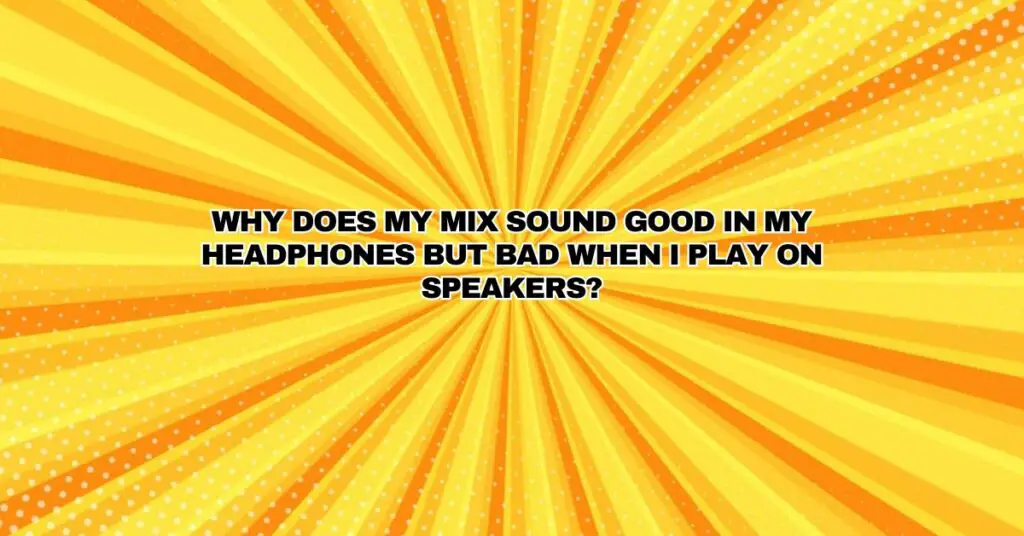Many music producers and audio engineers have encountered a common and frustrating challenge: a mix that sounds fantastic when listened to through headphones but disappoints when played on speakers. This discrepancy between headphone and speaker playback is a complex issue influenced by various factors. In this comprehensive article, we will explore the reasons behind this phenomenon and provide insights into how to create mixes that translate well across both listening environments.
The Headphone Advantage
Before delving into the differences and challenges, it’s essential to understand why headphones can provide an advantageous platform for mixing:
- Precision: Headphones offer an intimate and highly controlled listening environment. The drivers (speakers) are situated very close to your ears, providing a direct and precise representation of the audio.
- Isolation: Headphones provide isolation from external noise, which can be critical when making precise adjustments to audio elements in a mix.
- Binaural Perception: The stereo effect created by headphones can enhance the perception of stereo placement, allowing for more precise placement of sound elements within the mix.
- Clarity: In many cases, headphones can deliver a level of detail and clarity that may not be immediately achievable on speakers in a room with acoustical variables.
The Speaker Challenge
When a mix sounds great on headphones but falls short on speakers, several factors come into play:
- Room Acoustics: The acoustics of the room in which speakers are placed can significantly affect the sound. Factors like room dimensions, materials, and positioning can introduce anomalies that were not apparent while mixing on headphones.
- Speaker Placement: The positioning of speakers is critical. If not placed optimally, speakers can create cancellations, comb filtering, and other issues that adversely impact the mix’s perceived quality.
- Ambient Sound: Speakers can introduce ambient noise and external sounds into the listening environment, which may not have been audible while wearing headphones.
- Frequency Response: The frequency response of speakers varies, and they may not reproduce all frequencies with equal clarity, unlike headphones designed for precision.
Creating Translatable Mixes
To ensure that your mix sounds excellent on both headphones and speakers, follow these tips:
1. Reference Tracks: Listen to well-mixed tracks on both headphones and speakers to understand how they translate across different platforms.
2. Controlled Environments: If possible, mix in a controlled and acoustically treated environment. This minimizes the influence of room acoustics.
3. Multiple Listening Devices: Check your mix on various playback devices, including headphones, studio monitors, and consumer-grade speakers, to assess how it translates.
4. Speaker Placement: Ensure that your speakers are correctly positioned for optimal stereo imaging and clarity.
5. Acoustic Treatment: Consider adding room treatment to mitigate the influence of room acoustics. Bass traps, diffusers, and absorbers can help.
6. Mono Compatibility: Ensure that your mix is mono-compatible to maintain clarity on both headphones and speakers.
7. A/B Testing: Regularly switch between headphones and speakers while mixing to make adjustments and verify the mix’s translation.
Conclusion
The discrepancy between a mix that sounds excellent on headphones but less impressive on speakers is a common challenge faced by music producers and engineers. This disparity is driven by the differences in listening environments, acoustics, and the unique characteristics of each playback system.
To create mixes that translate well across both platforms, it’s crucial to understand the advantages and limitations of each, reference your work on various devices, and invest in acoustic treatment and precise speaker positioning. By following these steps, you can produce mixes that retain their quality and character when played through both headphones and speakers, ensuring that your music is enjoyed as intended by a diverse audience.

